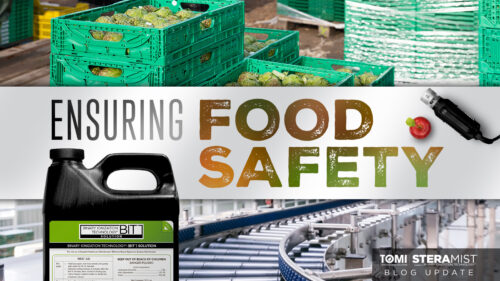Breaking Down Mycotoxins
What are Mycotoxins?
Mycotoxins are toxic substances produced by certain types of fungi (mold) that can contaminate food, agricultural crops, and environments, posing a potential health risk to humans and animals when consumed, or when frequenting these contaminated environments. These naturally occurring compounds have diverse chemical structures, but since they are caused by mold, they are considered a biotoxin by the FDA and USDA. They can cause a range of adverse effects, including organ damage, immune system suppression, and even carcinogenicity. Although only approximately 400 species have been identified, there are potentially up to 300,000 mycotoxins. With one mold species able to produce many different mycotoxins.
Diving into the chemical makeup of Mycotoxins
Mycotoxins are a diverse group of non-living toxigenic molecules with unique and intricate chemical structures. They are predominantly low molecular weight compounds, ranging from small volatile molecules to larger complex structures. These structures can vary greatly depending on the type of mycotoxin and the fungi that produce them.
The molecular structures of mycotoxins can exhibit significant diversity, with some belonging to classes such as aflatoxins, trichothecenes, ochratoxins, zearalenone, and fumonisins, among others. Each class of mycotoxin has its own distinct chemical structure and properties, contributing to their specific toxicological characteristics.
Understanding the molecular structure of mycotoxins is essential for studying their toxicity, interactions with biological systems, and developing effective strategies for their detection, prevention, and deactivation. Their intricate structures, combined with their potential health risks, necessitate ongoing research and efforts to develop innovative approaches for their control and mitigation in food and feed systems, as well as in the environments that they contaminate.
Breaking down Mycotoxins
Current approaches for mold remediation involve eliminating all contaminated items, including materials and equipment exposed to mycotoxins. Other methods such as using extreme heat and ozone to destroy mycotoxins are highly hazardous to humans. On the other hand, UV light and freezing temperatures have minimal to negligible impact on mycotoxins.
Extensive research has confirmed the efficacy of SteraMist ionized Hydrogen peroxide (iHP) disinfection technology in effectively deactivation of mycotoxins present in the air and surrounding environment. This innovative approach ensures complete deactivation of mycotoxins while prioritizing the safety of personnel and sensitive equipment. SteraMist employs a 7.8% hydrogen peroxide solution, which undergoes a cold plasma arc process to generate reactive oxygen species (ROS), specifically the hydroxyl radical (OH). These ROS play a crucial role in disrupting the chemical molecular structure of mycotoxins.
In a groundbreaking case study, David Mark Quigley, a longtime member of the biohazard community and owner of a company called BioRisk, examined the efficacy of SteraMist’s ionized Hydrogen Peroxide (iHP) technology in reducing mycotoxin levels in a commercial building severely affected by mold and mycotoxin contamination. The study involved applying ionized Hydrogen Peroxide to various surfaces including walls, ceilings, and HVAC systems. Results revealed a remarkable reduction in mycotoxin levels post-treatment, ensuring a safe and healthy environment for building occupants.
For more information on how SteraMist was able to achieve deactivation of Mycotoxins, please read Mycotoxin Deactivation: A Successful Mycotoxin Treatment and Reduction Case Study by David Mark Quigley located on this webpage.

